Our Verdict
All of the above tools provide a common platform to collect visual feedback and manage this feedback within your delivery teams. While TrackDuck, zipBoard and BugHerd are ideal for collecting feedback on web products during development, Usersnap is more suited for the post-production phase.
Why you can trust Creative Bloq
I have been a product manager for the last 15 years, and have enjoyed working on many exciting products across multiple organizations. One of my greatest passions has been to improve the productivity of the development process, and cut down the time-to-market for shipping products. In my experience, a lot of time is spent deliberating over designs, and making repeated changes to the product.
When there are multiple stakeholders, and every person has his own opinion. The product manager is left with the onerous task of collecting this feedback during multiple iterative cycles, putting it all together cohesively, and then working with the delivery team to get it all done.
So, is there a way to make this process more efficient? Yes, there is, use visual feedback. Visual feedback means that all of the product feedback can be gathered at one place and, more importantly, right there on the actual mock-ups or the live application. This offers two significant advantages:
- The product manager and delivery team are able to better understand and address feedback quickly, as the feedback is provided right on top of the page element that needs to be updated.
- All of this feedback is at one place, and hence, every person can read others comments, before adding his own opinions. This reduces the need for physical meetings, prevents repeated discussions and long email trails, which, in turn helps in expediting the overall development process.
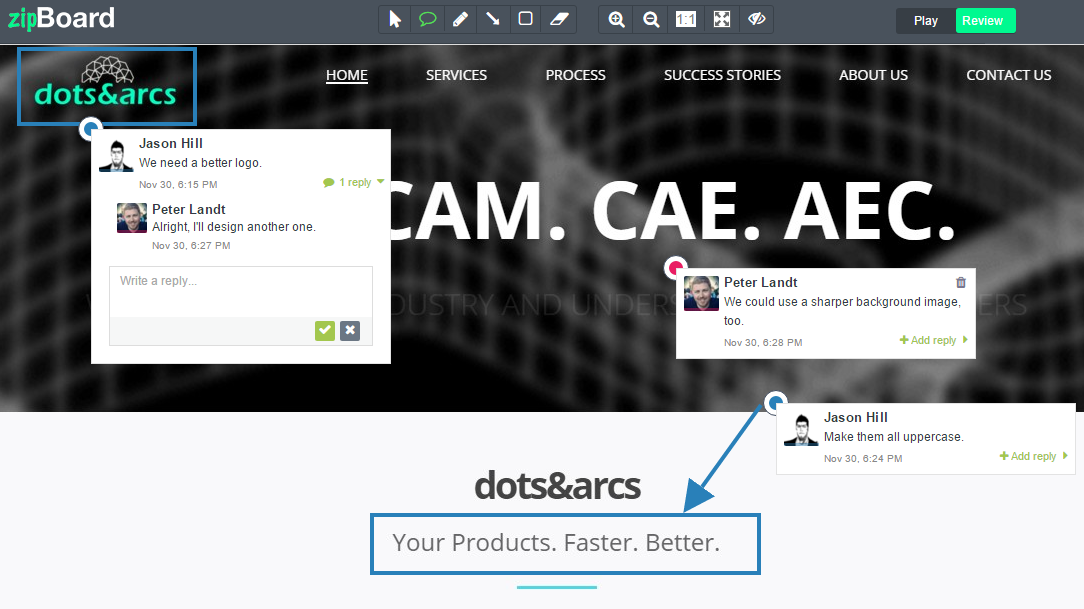
Now, for a product manager, this process can be super efficient but only if all of this feedback can be received and managed on the same platform. Imagine a world where you receive automated notifications when reviewers enter their feedback on the working prototype of your application. Then you review all of this feedback, prioritize it, and assign actionable feedback as tasks to your delivery team. And what's more, once these tasks are resolved, the reviewers are automatically notified of their completion.
The good news is that you can do all of this with a decent visual feedback tool, and we test out four of the best here. We are sticking with application that meet the following criteria:
- All of the feedback can be provided on the actual live working product, and not just a design mock-up.
- Both visual feedback and issue management can be done at the same place.
With those in mind, here are the four that we are putting through their paces.
01. TrackDuck
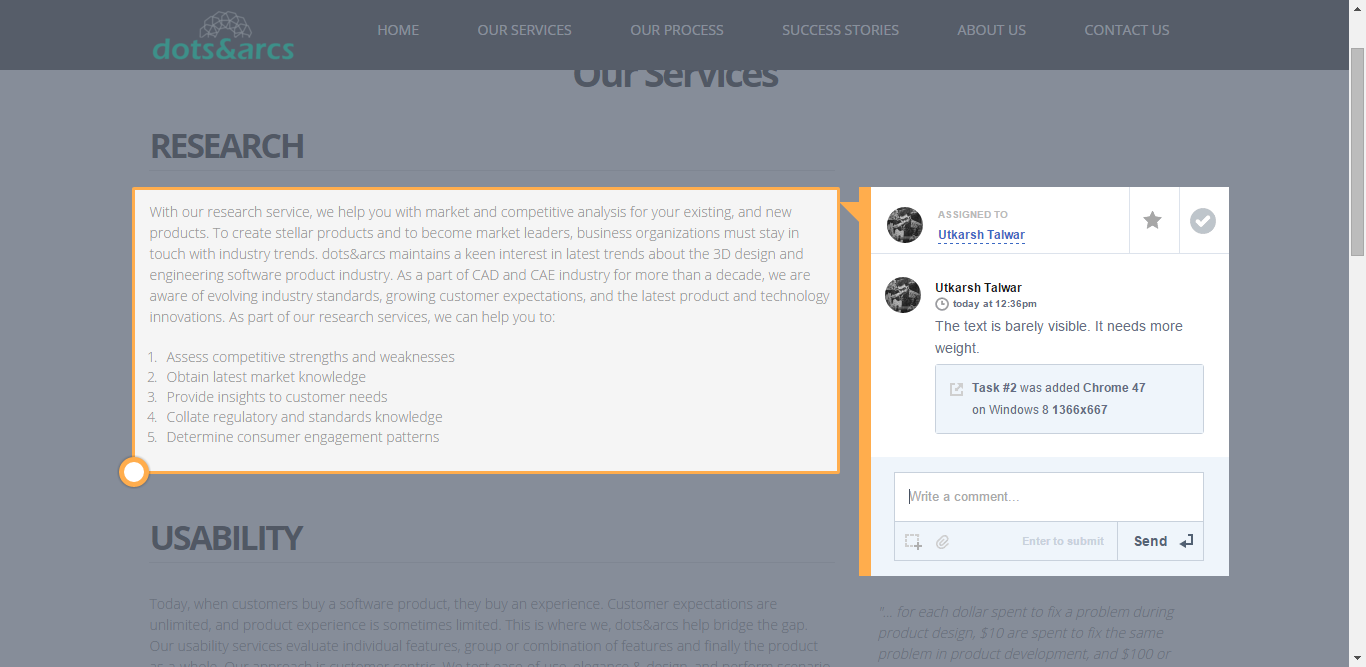
I have found TrackDuck to be the most technically advanced application among all the visual feedback tools out there. If you have ever done any software development in the past, you would appreciate its ability to overlay annotations on live working websites. All of the entered comments are automatically converted into tasks, and can be assigned to the team you're collaborating with. Also, it is a delight that TrackDuck already integrates with popular tools like Basecamp and JIRA, with a two-way synchronization.
On the flip side, I have had colleagues and friends who still get lost within the TrackDuck interface and get confused with its user flow. For instance, more than half of the real-estate on the left panel is dedicated to the 'Getting Started' guide, and there is no easy way to dismiss it. On the contrary, simple things, like the link to the website you're reviewing, should be intuitively easy to find, but they are not. It will take you a few click to find these things. A couple of times, I had to manually add URLs to different pages on the same website, because the TrackDuck extension wouldn't load on those pages.
Another thing that bugged me, and will certainly irk some other product managers too, is TrackDuck's slow response time. It takes a while for the extension to load-up on the website, and for the tasks to open up on the task manager, and these are just a couple of examples.
02. zipBoard
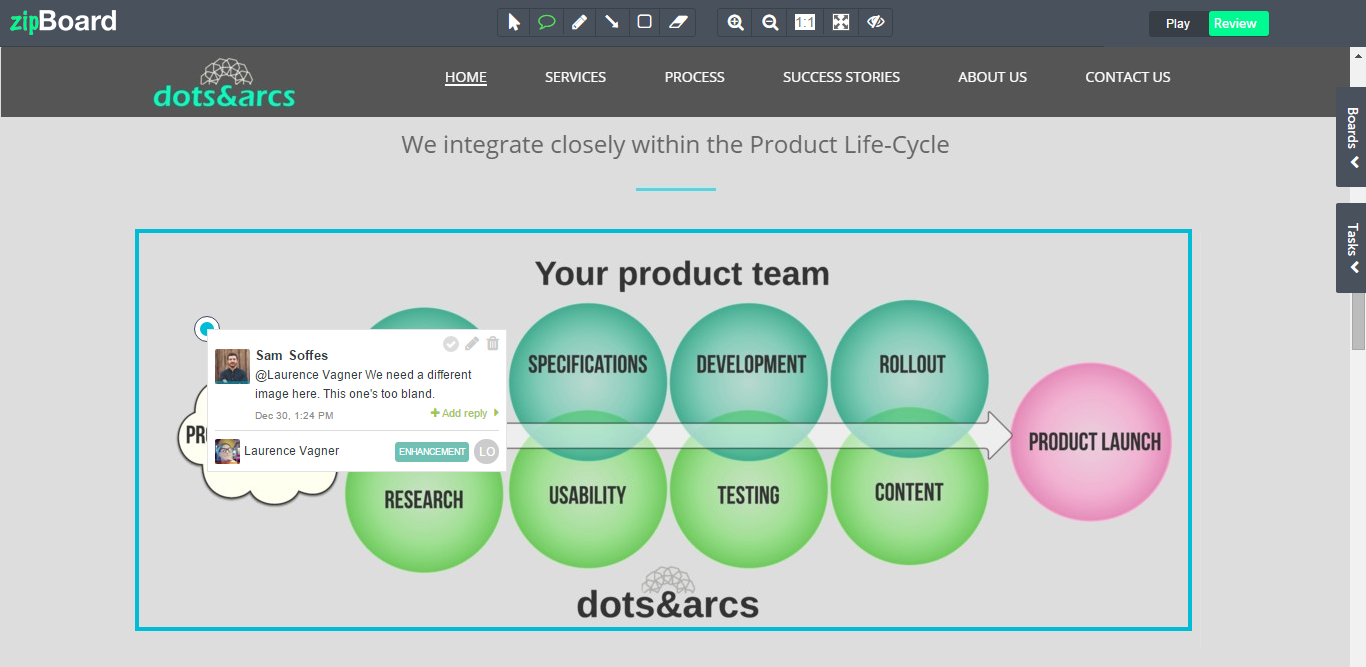
For full disclosure, I am currently product head at zipBoard so it's no surprise that I love its look and feel. It is the most intuitive and easiest to use among the four applications, allowing users to take screenshots, and then enter feedback on top of them. Its task manager is similar in features and functionality to issue-tracking software, like JIRA and Bugzilla, so the users of such applications will be instantly familiar with zipBoard.
The current limitation of zipBoard is its current lack of support for Internet Explorer and Safari browser. As of now, it only supports Google Chrome and Firefox browsers, which might not work for every organization.
03. BugHerd
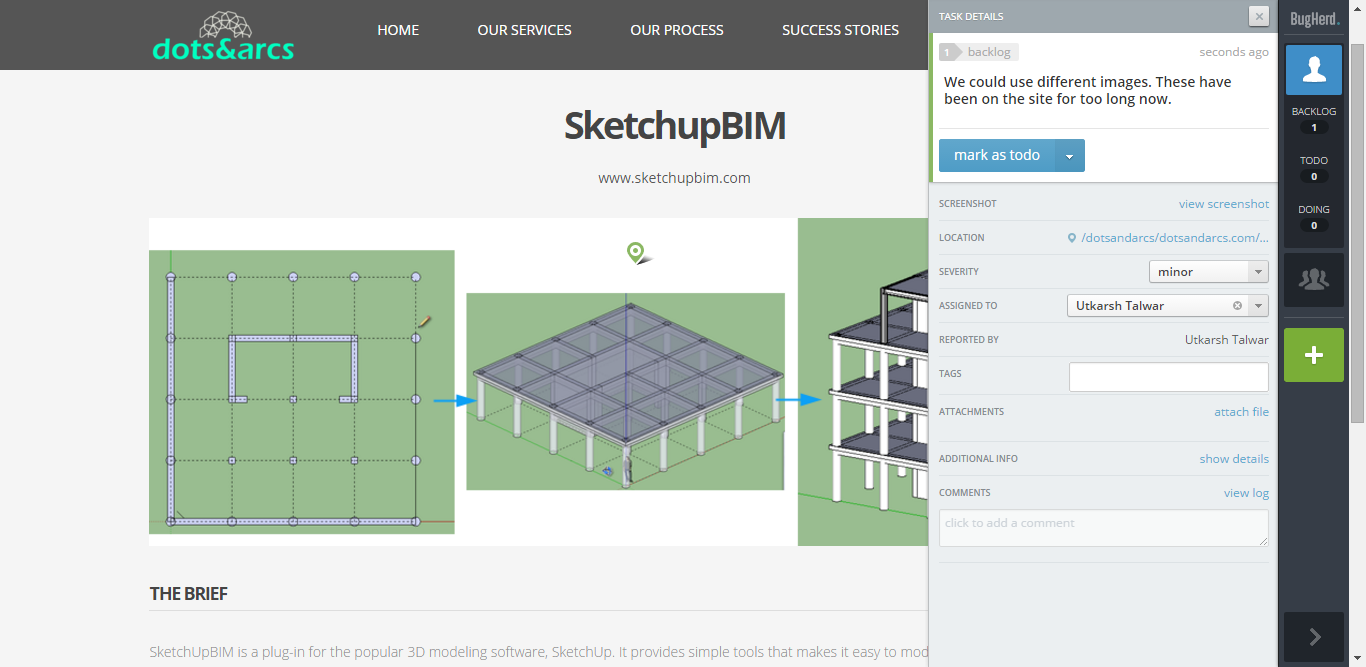
BugHerd provides a good and stable browser extension, which allows its users to provide visual feedback. If you like the kanban style of task management (like Trello), then you will love BugHerd. It provides an intuitive interface for task management, and a lot of options within the tasks for customization.
If you prefer an issue-tracking approach (like JIRA and Bugzilla), then BugHerd is not for you. Also, the first run experience, where a user is forced to enter a website URL and enter an issue before he can see his project, has definite scope for improvement.
04. Usersnap
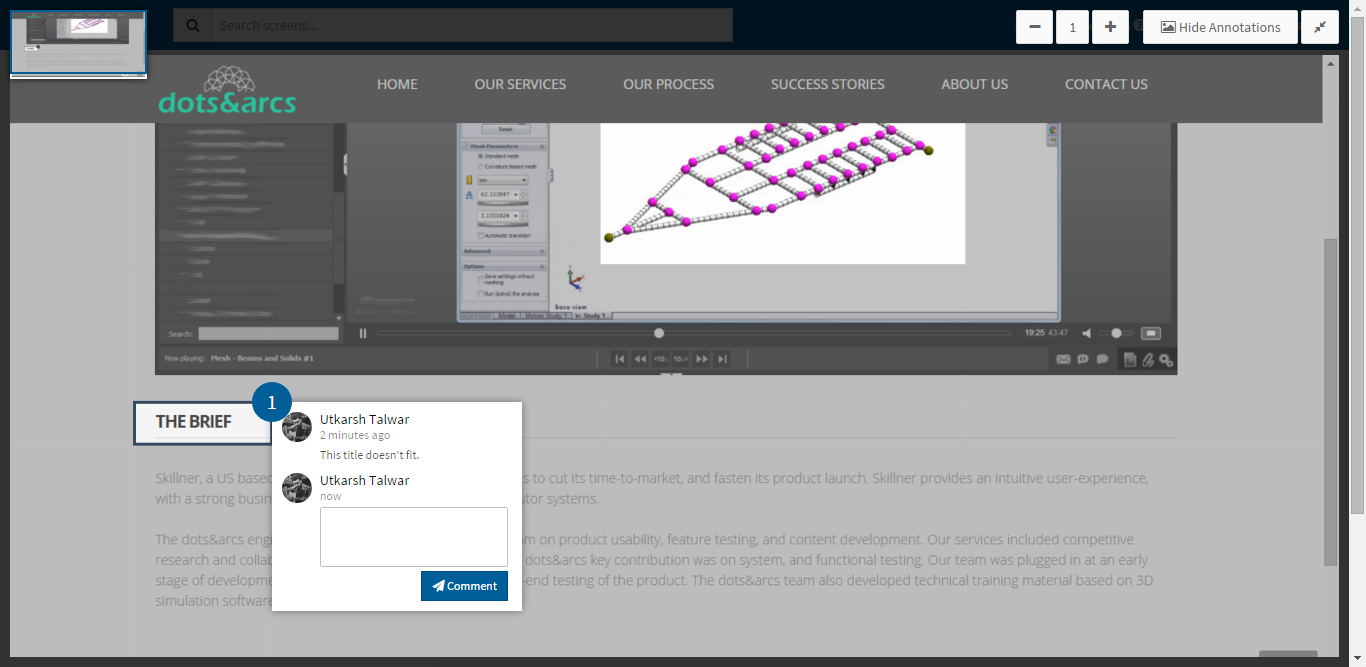
Usersnap is another useful tool for visual feedback, more specifically tailored towards end-users of the real application. Once again, I found that their task manager has all of the required information, and lots of customization options to assign actionable items among the delivery team.
With Usersnap however, it takes a while to first take the screenshot, and then send the screenshot back to the parent application. And of course, if you are planning to use a visual feedback tool during development (as opposed to post-production), then you are better off with either of the first three tools. Usersnap is good for getting end users' feedback. Its workflows are otherwise complex and time-consuming for collecting feedback during development.
Comparison
Pick any of the above tools, and they will help you to cut down your time-to-market. All of the above tools provide a common platform to collect visual feedback and manage this feedback within your delivery teams. While TrackDuck, zipBoard and BugHerd are ideal for collecting feedback on web products during development, Usersnap is more suited for the post-production phase. I have summarized the feature list of these products in the below table.
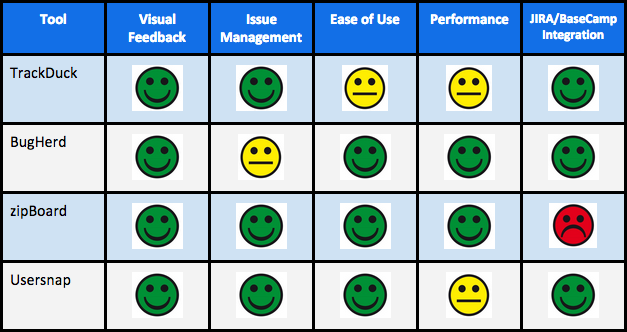
All of the above tools are very powerful, and are capable of providing real-time updates and user notifications. If you love Trello style of task-management (kanban), then use BugHerd, and if you love JIRA or BugZilla, use zipBoard.
TrackDuck, although being the most technologically advanced in its features, does need a little bit of a user-experience overhaul to make it more intuitive and user-friendly.
And lastly on pricing, all of the four tools either offer a free-trial or a free version. While zipBoard allows one free project for eternity, all other tools offer a limited day trial version. Interestingly enough, the paid plans for zipBoard and TrackDuck are based on the number of projects, whereas for BugHerd and Usersnap, it is based on the number of collaborators. The difference in pricing structure might be another factor that could help you pick your ideal tool.
Words: Pranab Agarwal
Pranab Agarwal is a product manager and technology enthusiast, ex-Microsoft and IIM Ahmedabad alumni. He is currently product head at zipBoard.

Thank you for reading 5 articles this month* Join now for unlimited access
Enjoy your first month for just £1 / $1 / €1
*Read 5 free articles per month without a subscription

Join now for unlimited access
Try first month for just £1 / $1 / €1
out of 10
All of the above tools provide a common platform to collect visual feedback and manage this feedback within your delivery teams. While TrackDuck, zipBoard and BugHerd are ideal for collecting feedback on web products during development, Usersnap is more suited for the post-production phase.

The Creative Bloq team is made up of a group of art and design enthusiasts, and has changed and evolved since Creative Bloq began back in 2012. The current website team consists of eight full-time members of staff: Editor Georgia Coggan, Deputy Editor Rosie Hilder, Ecommerce Editor Beren Neale, Senior News Editor Daniel Piper, Editor, Digital Art and 3D Ian Dean, Tech Reviews Editor Erlingur Einarsson, Ecommerce Writer Beth Nicholls and Staff Writer Natalie Fear, as well as a roster of freelancers from around the world. The ImagineFX magazine team also pitch in, ensuring that content from leading digital art publication ImagineFX is represented on Creative Bloq.
